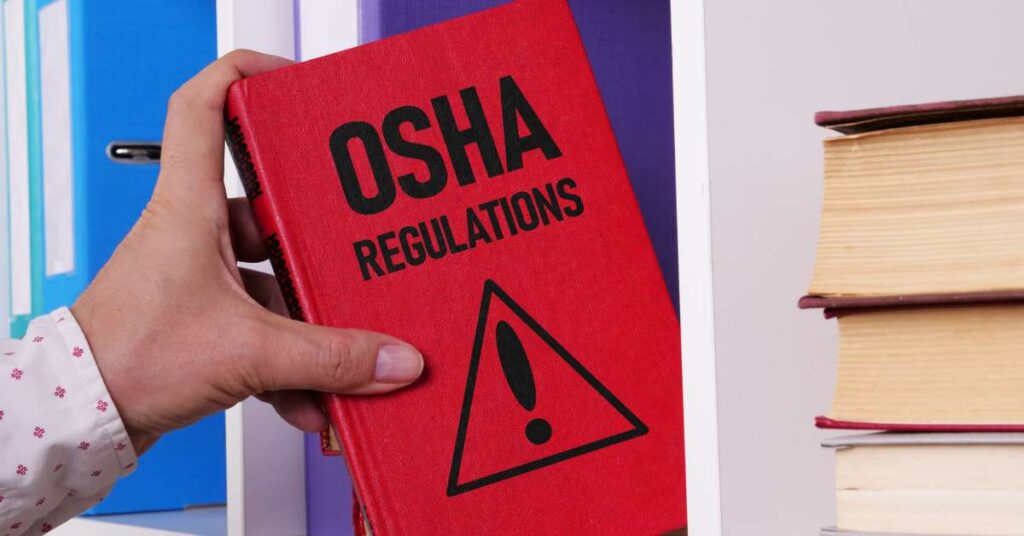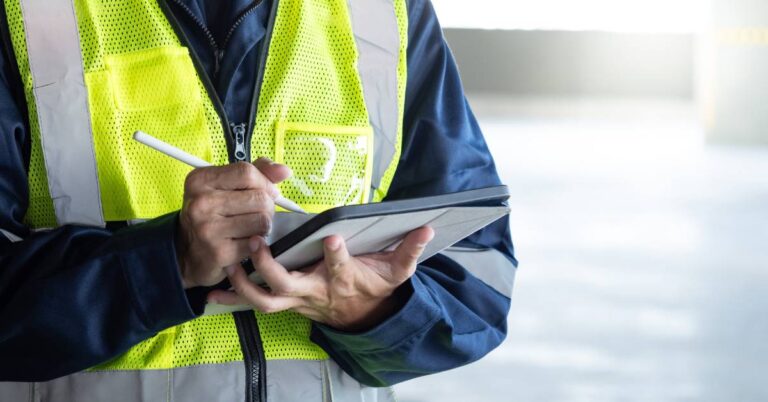A safe, compliant workplace is crucial for construction zones and industrial sites. Following the right guidelines and procedures can protect your team and your business from accidents and potential fines, whether running a small contracting business or managing a larger operation.
Understanding how to ensure safety compliance in the workplace isn’t as complicated or scary as it sounds. Let’s walk through the key steps to creating a safer work environment.
Understanding Workplace Safety Compliance

Workplace safety compliance refers to following rules and regulations set by local, state, or federal agencies to protect workers from hazards. The Occupational Safety and Health Administration (OSHA) is one of the primary organizations overseeing workplace safety in the U.S.
However, you may have additional regulatory bodies to follow depending on your industry. Compliance with these regulations can save you from hefty fines and protect your employees from harm.
The key to safety compliance is awareness. You must stay updated on changing regulations, know the risks associated with your workplace, and take proper measures to mitigate them. Many contractors may struggle to meet the requirements, but you can make safety compliance more manageable with the right steps.
Assess Your Current Safety Standards
Assess the current safety standards in your workplace before implementing new safety measures. Walk through your job sites and facilities and note any potential hazards. Are workers wearing the necessary personal protective equipment (PPE)? Are all electrical systems up to code? Do you have clear and effective emergency exits?
Conducting a thorough safety audit will give you a baseline understanding of where you stand regarding compliance. It’s best to involve key employees in this process so they can provide input on potential safety risks. This process can also generate employee buy-in when you make changes or improvements.
Develop a Clear Safety Policy
Once you’ve assessed your current safety practices, it’s time to develop a clear, written safety policy. Your policy should outline your company’s commitment to safety, detail specific procedures for common hazards, and explain the roles and responsibilities of each employee.
You’ll want to include procedures for reporting incidents, how to respond to emergencies, and expectations for daily work practices, such as wearing PPE or operating machinery. Having written rules is crucial for accountability and keeps everyone on the same page.
You should make this policy easily accessible to all employees. Consider posting it on a bulletin board, handing out copies, or including it in a workplace safety handbook.
Provide Regular Training
Safety training is an essential component of workplace safety compliance. Even if your team has years of experience, it’s important to provide regular training sessions to update everyone on best practices and any regulatory changes. These sessions cover everything from handling hazardous materials to using power tools safely.
You should make the training hands-on when possible. For example, show your team how to set up and use a ladder properly instead of simply talking about ladder safety.
Training should also include updates on new OSHA regulations or changes to your safety policy. Consider working with a third-party trainer or subscribing to online resources that provide up-to-date safety training materials if conducting these training blocks yourself feels overwhelming.
Invest in the Right Safety Equipment
You must provide the necessary equipment to maintain safety compliance. Your employees will always need easy access to personal protective equipment (PPE), such as helmets, gloves, and eye protection. You should also invest in equipment such as harnesses, first aid kits, and fire extinguishers where necessary.
Further, routine maintenance of this equipment is essential. Faulty safety equipment is often as dangerous as not having any at all. Show your employees how to properly use and maintain their PPE and other safety gear to prevent misuse or accidents.
Conduct Routine Inspections

Regular workplace inspections are essential to maintaining safety compliance. These inspections can help you identify hazards you may have overlooked and determine whether your workplace meets the required safety standards. You should assign a safety officer or responsible employee to conduct routine checks of your job sites.
You can schedule inspections daily, weekly, or monthly, depending on the nature of the work. They should focus on everything from equipment conditions to workplace behavior. Immediately address any problems you find during the inspection and inform your employees of the issue so it doesn’t happen again.
Keeping detailed records of these inspections is vital. This documentation is useful for proving legal compliance, especially if OSHA or another regulatory body audits your workplace.
Establish an Incident Reporting System
Immediately reporting accidents and near-misses is essential. Establishing a simple, clear incident reporting system will encourage employees to speak up when something goes wrong, allowing you to address the problem before it becomes a bigger issue.
Make sure all employees know how to report incidents and that they won’t face retaliation for doing so. A good incident reporting system can help you spot trends, address recurring issues, and prevent future accidents.
Thoroughly investigate each report, find out what caused the incident, and take the necessary steps to prevent it from happening again. Sometimes, the solution could include changing a procedure or providing additional training.
Stay Updated on OSHA Guidelines
Your safety practices must change with changing regulations. Keeping up with OSHA guidelines can feel overwhelming, but it’s necessary for maintaining workplace safety compliance. OSHA regularly updates its standards and publishes new guidelines based on industry trends, technological advancements, or data from workplace incidents.
Set up a system for regularly checking OSHA’s website, sign up for newsletters, or hire a safety compliance team to keep you informed. Staying updated will help you remain compliant and keep your workplace safe.
Create a Culture of Safety
Safety compliance isn’t just about following rules and regulations—it’s about creating a workplace culture that prioritizes safety. Employees are more likely to follow protocols, report hazards, and care for themselves and each other when safety becomes part of the company’s core values.
Encouraging open communication, rewarding safe practices, and leading by example is important. Employees will follow suit when they see that their employer takes their safety seriously. Make safety a regular topic in team meetings and celebrate milestones such as accident-free days to reinforce its importance.
Compliance Management Services: Proven Workplace Safety Solutions
Ensuring safety compliance in the workplace requires commitment and regular effort. It’s also essential for protecting your workers and avoiding legal issues. You can create a safer environment by assessing your current safety practices, developing clear policies, investing in proper equipment, and conducting regular training and inspections. Staying informed about OSHA updates and fostering a safe environment will keep your business running smoothly.
Working with safety compliance consultants can provide peace of mind as you navigate these important regulations. The experts at Compliance Management Services can handle your complex safety concerns and erase any concerns about compliance. Contact us today for more information about our proven workplace safety solutions.






